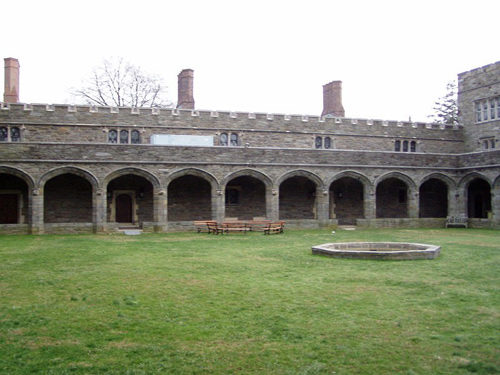8 Things You Should Know About Emmy Noether, Einstein’s Equal
Emmy Noether spent a lifetime overcoming obstacles. She broke barriers to earn her education, shattered glass ceilings to be able to teach, and lost her job due to the rise of the Third Reich. Along the way, she made immortal contributions to algebra and physics, impacted the theories of Einstein and others, and managed to make it to America to continue her work. On the 100th anniversary of one of her biggest triumphs — a theorem that shaped modern physics — here are eight things you should know about her.
1. Math Was in Her Blood: Amalie Emmy Noether was born on March 23, 1882, in Germany. Her father, Max Noether, had a prodigious reputation as a mathematician, notably in algebraic geometry. Her mother, Ida Amalia Kaufmann, was a merchant’s daughter. Emmy was the oldest of four children, and they were raised in the Jewish faith.
2. Getting Educated Was a Challenge: Noether did well in school and got a high score on the teacher’s exam that would have allowed her to teach in girls’ schools. However, she rattled convention by choosing to attend the Friedrich-Alexander University Erlangen-Nürnberg where her father taught. One of only two women allowed to attend a school of nearly 1,000 men, she was forced to get approval from each professor before taking a class. Nevertheless, she persisted; in 1903, she passed her graduation exam.
3. Teaching Was a Thankless (and Payless) Job: Noether taught at Erlangen for seven years (without pay!). She was invited to teach at the University of Göttingen by David Hilbert, who at that time was working with Einstein on relativity. The invitation caused a schism between educators and departments when some faculty objected to the idea of having a woman teach. Hilbert was incensed at the opposition to Noether, and told an opposing colleague, “Meine Herren, I do not see that the sex of the candidate is an argument against her admission as a Privatdozent. After all, the Senate is not a bathhouse.” Noether got the job, but went without pay again for the first year.
4. Noether’s (first) Theorem Was “One of the Most Important in Modern Physics”: In 1915, Noether proved that “that every differentiable symmetry of the action of a physical system has a corresponding conservation law.” Her paper on the topic was delivered on July 26th, 1918 and offered insight into how behavior in systems is constant, and it opens doors in math and higher levels of physics. The Science Asylum’s video, below, offers a deeper, but easy to follow, explanation. In their 2004 book, Symmetry and the Beautiful Universe, physicists Leon M. Lederman and Christopher T. Hill say that the theorem is “certainly one of the most important mathematical theorems ever proved in guiding the development of modern physics, possibly on a par with the Pythagorean theorem.”
The Science Asylum explains Noether’s (first) Theorem
5. Noether Created an Amazing Body of Work: Noether continued to teach as she produced papers and theories at a staggering pace. She developed a reputation as a fast talker, a stern critic, and a devoted teacher. The Dutch mathematician L. van der Waerden, a colleague of Noether’s who later credited her in his book Moderne Algebra I, called her original thinking “absolutely beyond comparison” and described her as “completely unegotistical and free of vanity, she never claimed anything for herself, but promoted the works of her students above all.” During this period, Noether also spent time teaching at Moscow State University. In 1932, Noether was a co-recipient of the Alfred Ackermann-Teubner Memorial Award for the Promotion of Mathematical Sciences for her contributions to math. Later that year, she delivered an address to the International Congress of Mathematicians in Zurich, a high honor for her field.
6. Nazis Ruin Everything: In 1933, Adolph Hitler became the German chancellor. Hitler’s “Law for the Restoration of the Professional Civil Service” removed Jewish citizens from a number of jobs, including university professors. Noether and many others found themselves shoved out of their positions.
7. She Found an American Escape Route: Before the situation in Germany completely deteriorated, Noether and many of her colleagues were able to exit to America as universities offered jobs and a chance to get out of the country. Einstein, for example, went to Princeton, and Noether went to Bryn Mawr, the women’s college in Pennsylvania, on a grant from the Rockefeller Foundation in 1933. Unfortunately, Noether wouldn’t live much longer; she was diagnosed with cancer in 1935 and died only a few days later.

8. Her Impact Was Inestimable: On May 4, 1935, Einstein wrote an appreciation of Noether for the New York Times. He minced no words, saying, “In the judgment of the most competent living mathematicians, Fräulein Noether was the most significant creative mathematical genius thus far produced since the higher education of women began.” At the 1964 World’s Fair, which was themed for Modern Mathematicians, Noether was the only woman to be recognized. Minor planet 7001 Noether, which orbits within the Asteroid Belt, was named in honor of her after its discovery in 1955.